How to sprout and grow a mango tree from the pit of a mango purchased at a farmer’s market or health food store.
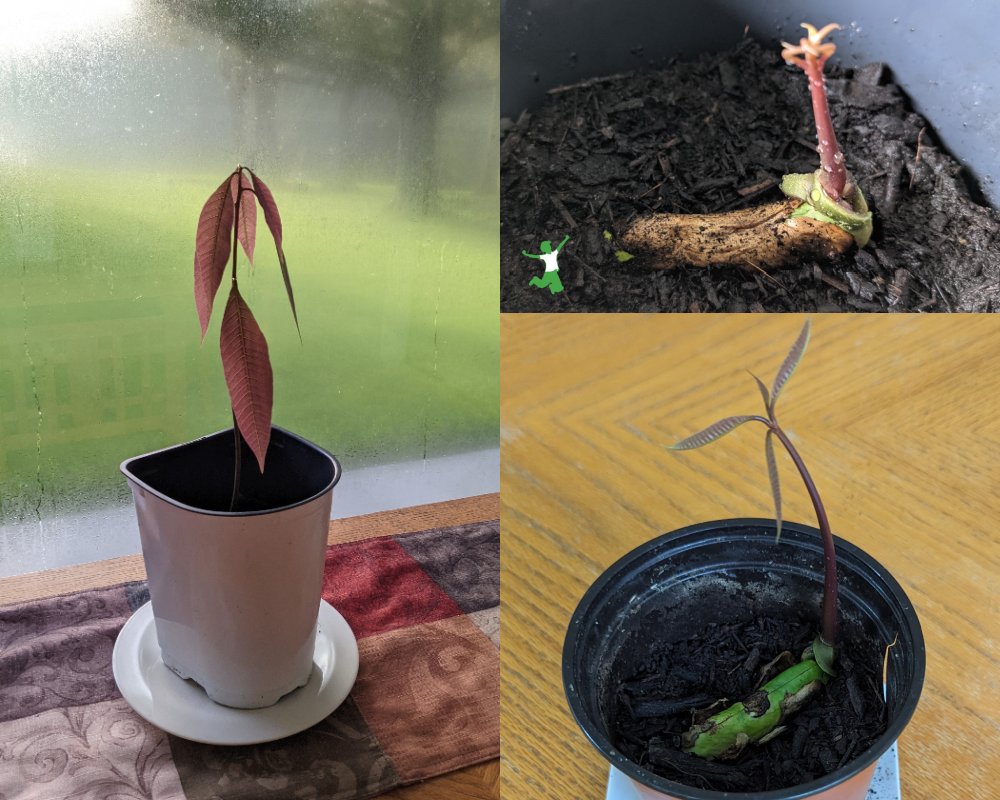
Mangos are one of my family’s favorite fruits, so growing a few mango trees in my yard has been a DIY project I’ve been wanting to tackle for quite some time.
This year, I got several varieties of absolutely gorgeous mangos from my local urban market during June, which is peak season for mangos in my neck of the woods.
I figured these mangos would be my best shot for growing trees that are most suitable for the climate here in Central Florida.
For those of you who live in more northern climes, you can still sprout and grow a mango tree!
Simply replant in large pots (instead of outside) to keep on a covered patio or porch area to protect the tree from frost and excessively cold temperatures in the winter.
Growing a mango tree from seed has turned out to be one of the easiest gardening projects I’ve ever undertaken.
I’m 4 for 4 in my attempts to sprout a mango seed removed from the pit.
While it will take a few years to produce fruit, mango trees themselves are beautiful and a lovely addition to the landscape in the meantime.
If your children enjoy eating mangos, this is a fun project to do with them! It teaches cultivation skills as well as patience and responsibility as they watch the seed sprout and then care for the slowly growing young tree until it is ready for replanting in the ground outside or in a large planter.
Here are the easy steps with pictures!
Slice Open a Ripe Mango
This short video from a number of years ago is my youngest demonstrating how to slice a ripe mango by cutting each half into a “porcupine”.
The middle piece that remains after slicing off the ends is where the pit is.
Once you’ve enjoyed eating the mango porcupines, you’re ready to go to the next step.
Remove the Excess Flesh From the Pit
After slicing up the mango, the middle part where the pit is will still have some edible fruit on it.
Slice this off as best you can and enjoy it along with the porcupine halves.
Then, rinse off the excess flesh still clinging to the pit with running water from the kitchen faucet.
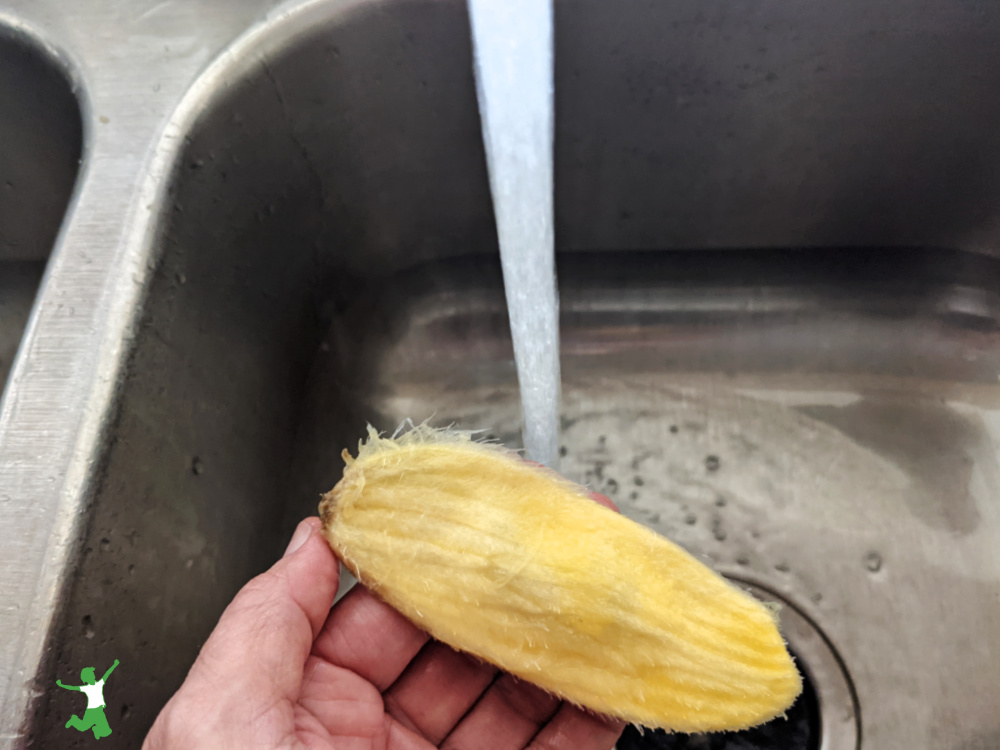
Remove the Seed from the Pit
The next step is to remove the mango seed from the pit.
To accomplish this, take a knife and very carefully make a small cut along the thin side of the pit until you are able to it open with your fingers.
I personally find using a steak knife works best to do this.
The seed will be nestled inside the opened pit!
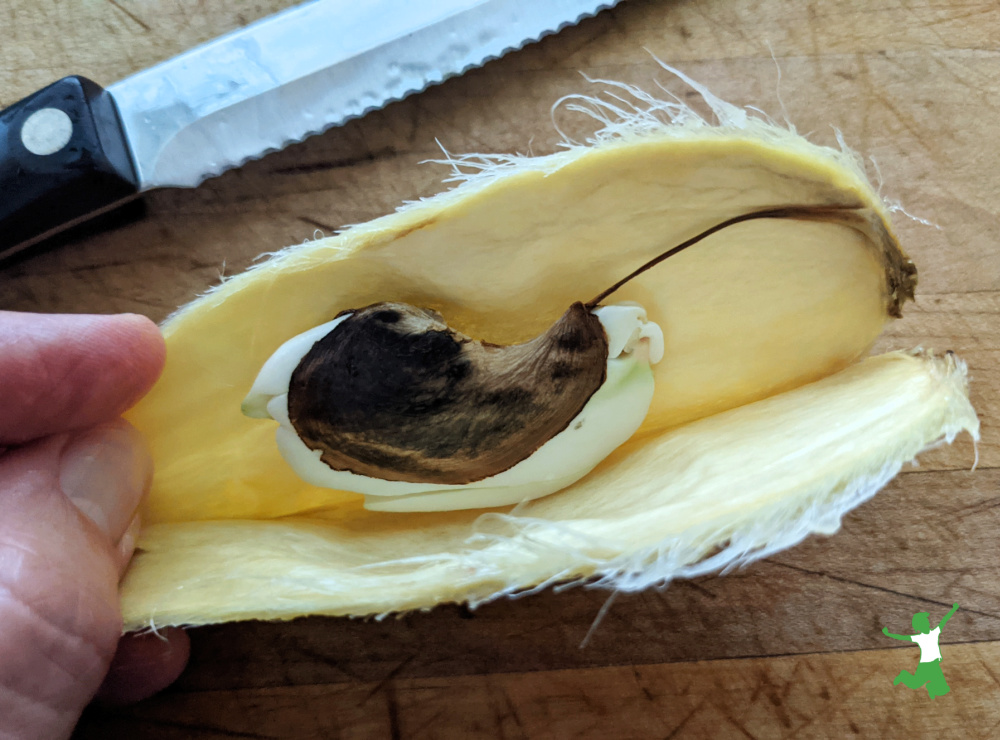
Soak the Mango Seed
Once you’ve removed the mango seed from the pit, the next step is to soak it.
I put the seed in a small glass of filtered water and let it sit for an hour or two.
Some places say to soak it for longer, but I’ve had fantastic results with sprouting the seeds with just a short soak.
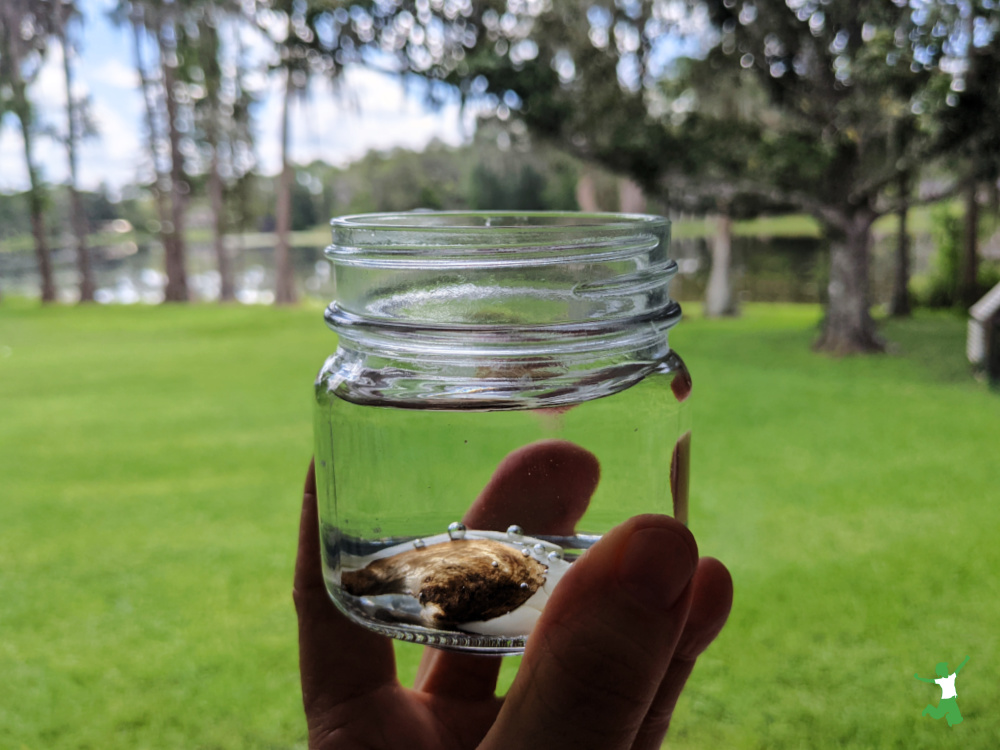
Plant Seed Uneven Side Up
After soaking the mango seed, it’s time to plant it!
Select a small pot that is ideally 2-3 times as wide as the seed.
If you don’t have a pot that wide, no worries. The seed will probably sprout anyway.
I haven’t had a mango seed fail to sprout yet!
Fill the pot with organic potting soil, and plant the mango seed with the side that is above the dotted line in the picture slightly above the soil.
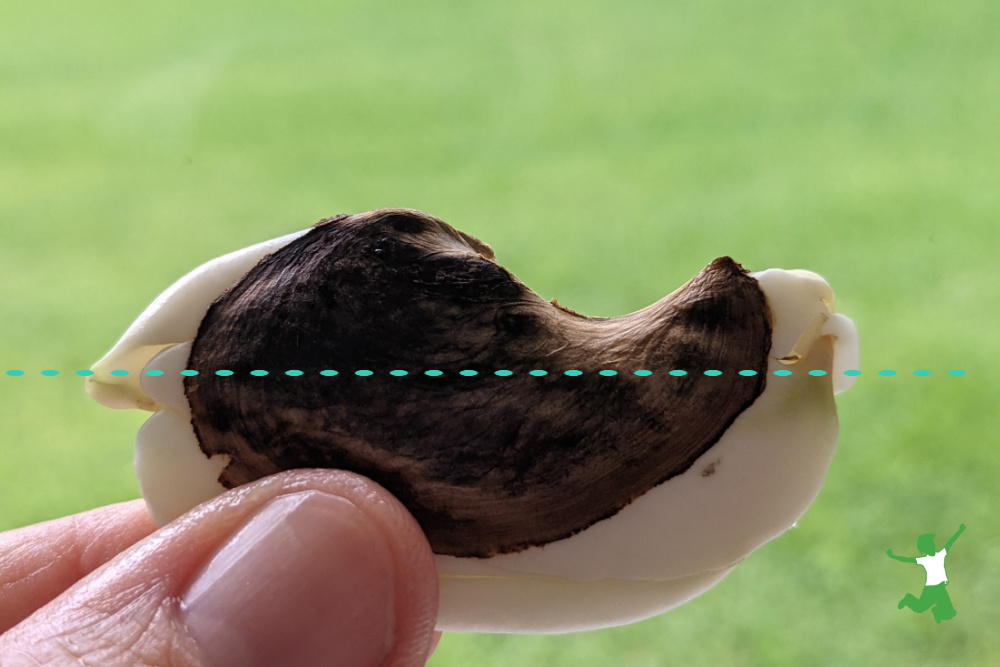
Lightly Water Every Day
After planting, be sure to lightly water your planted mango seed daily.
Humidity favors the sprouting process, so if your home is very dry, some sources suggest cutting a plastic water bottle in half and covering the seed to form a tiny greenhouse around it.
Position the pot on a table near a window where the seed will get plenty of indirect sun.
I live in humid Florida, so I did not do this. I’ve had great results anyway with all of my seeds sprouting within 1-2 weeks.
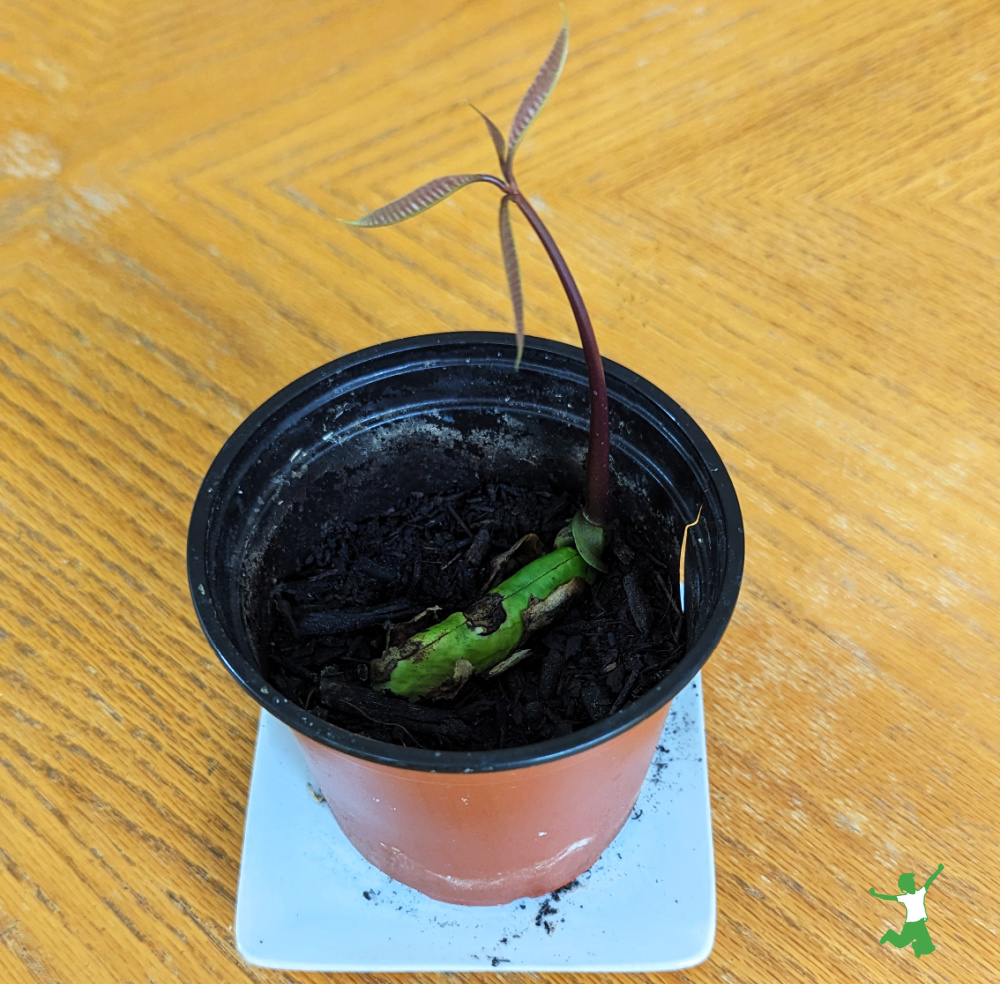
Replant the Mango Tree Seedling
Once your mango tree seedling is about a foot tall, it’s time to replant it outside in its permanent spot or a large planter.
My first mango tree has now reached this size, and I will be planting it outside very soon.
I’ve picked a spot in the backyard by the water where the temperatures rarely go below freezing even on the coldest winter nights. The spot is also underneath a much large tree, which will protect it from any frost.
The most successful mango trees in my neighborhood are planted this way, so I figured it would be best to do the same!
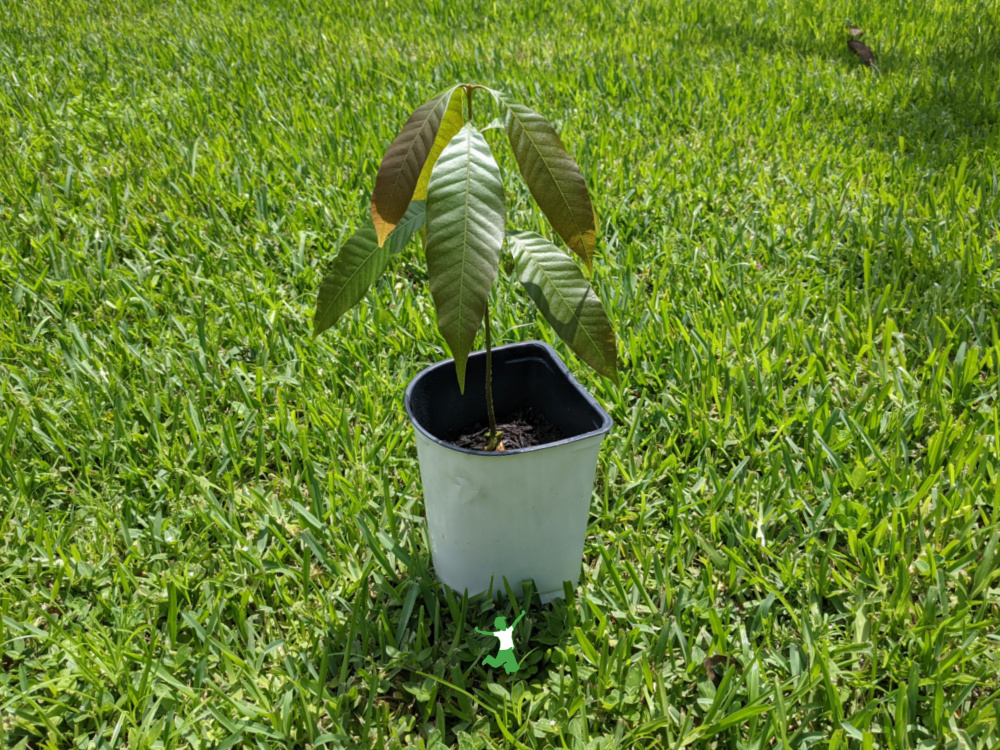









Thank you, Sarah.
I have 3 successes with your approach. Prior to that I have had only failures getting mango seeds to germinate.
I love germinating seeds from fresh produce and fruit!
Anne
Yay! Glad it is working for you too. I have 3 mango trees now planted in my yard that are growing very fast…all germinated with this approach. Two of them is at or beyond 4 feet tall now!!